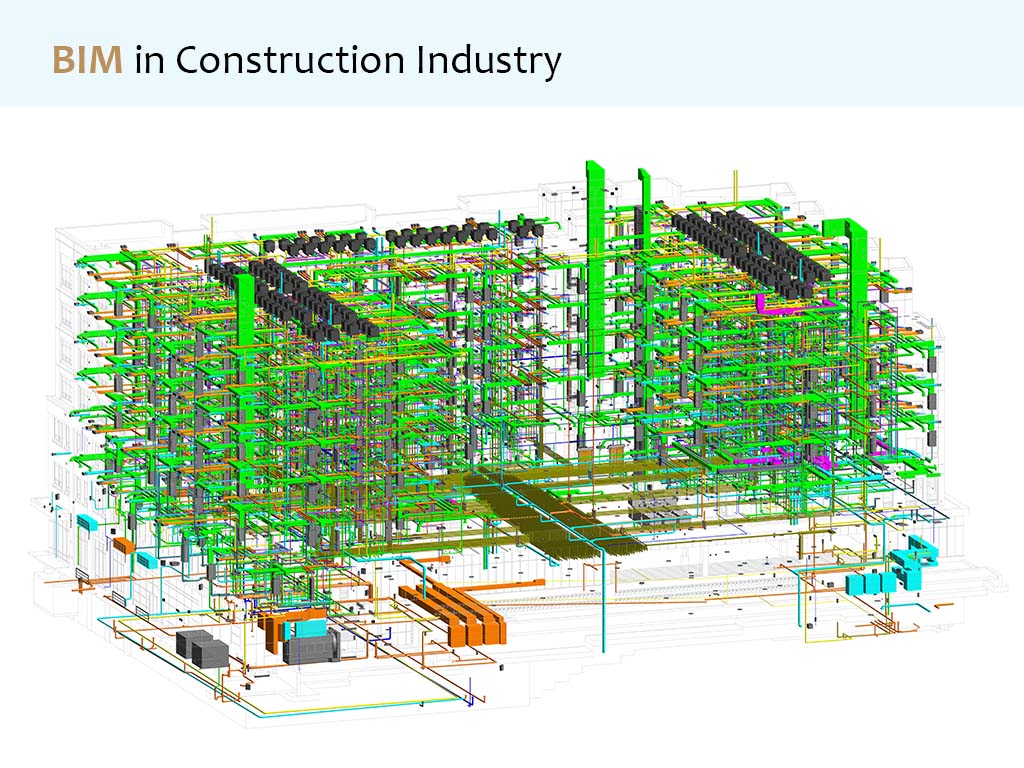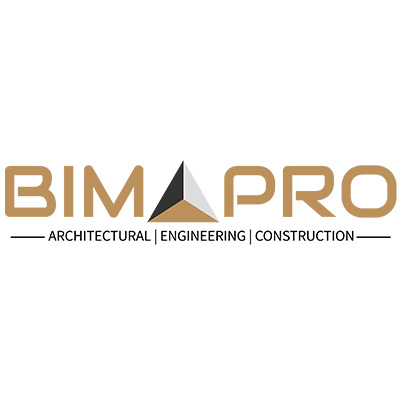BIM in Construction Industry

BIM in Construction Industry
BIM in construction industry has a profound impact,
revolutionizing the way projects are planned, designed and constructed. BIM
provide digital 3D representation of the physical and functional
characteristics and functionality of the building’s facility. It contains
detailed geometric and semantic information of architectural, MEP, structural
disciplines integrated together to produce a comprehensive 3D BIM model of the
building.
It allows all stakeholders of the design and constriction
projects such as architects, engineers, general contractors, trade contractors
to work collaboratively in a shared digital BIM platform.
BIM has transformed the construction industry by improving
the team collaboration, design optimization, clash detection, cost estimation,
scheduling, and facility management. The adoption of BIM in construction
industry is growing continuously as more construction companies are recognizing
its advantages of improving the project outcomes, mitigating risks, save cost
overrun, quick turnaround time, and enhance efficiency throughout the building
lifecycle.
BIM Uses in the Construction Phase
BIM uses are the actual output from the BIM process. The key
BIM uses in construction are introduced and explained further in the following
below:
Existing
Conditions Modeling or Field Capturing
A 3D model can be developed of any existing conditions for a
site to create a representation of current conditions on a site, within a
facility, or a particular space, a 3D model can be generated utilizing various
techniques, such as modeling software, laser scanning, and other surveying
methods, based on project requirements and objectives. Laser scanning produces
a remarkably precise 3D point cloud that can be associated with the BIM model
and utilized for modeling the area or validating existing models. Explore: Point Cloud Scan to BIM Services
Cost
Estimation or Quantity Takeoff
BIM 3D model can be used to generate accurate quantity
takeoffs of the building materials and components. Here the 3D model is linked
to a cost data, which can be extracted as a cost estimate.
4D modeling is a process used to plan and visualize the
phased occupancy of a construction project. It is particularly useful for
renovation, addition, retrofit, or any project where construction activities
need to be sequenced and coordinated. A 4D model integrates the traditional 3D
building model with the dimension of time, allowing stakeholders to visualize
and understand the project’s construction sequence. Explore: 4D Construction Simulation Services
Site
Utilization Planning
By linking the information 3D model with the 4D schedule,
project stakeholders can effectively convey space and sequencing requirements
on the construction site. This integration allows for a better understanding of
how different elements come together over time and helps in identifying any
potential conflicts or constraints that may arise during construction.
3D
Coordination and Clash Detection
Clash detection software is a valuable tool used in the
construction industry to coordinate and identify clashes or conflicts between
different building systems. It compares the 3D models of various systems, such
as architectural, structural, mechanical, electrical, and plumbing, to detect
any clashes before the actual construction or installation takes place. Explore: BIM Coordination Services and Clash Detection Services
Construction
System Design or Virtual Mock-up
3D modeling software is extensively used in the construction
industry to generate, design, and analyze building systems. It allows for the
creation of detailed 3D representations of various components and assemblies,
such as formwork, glazing, tie-backs, and more.
A key area of interest when using 3D modeling software is
the joints and edges between assemblies. These critical connection points
require collaboration and coordination between multiple trades, and the
software allows for a comprehensive analysis of these areas.
Digital
Fabrication
Digital fabrication, enabled by BIM technologies ensures
that the manufacturing phase encounters minimal ambiguities and possesses
sufficient information to fabricate components with minimal waste. By utilizing
digital information, manufacturers can accurately translate design intent into
fabrication instructions, reducing errors and improving efficiency. Digital
fabrication can be seen in sheet metal fabrication, structural steel
fabrication, pipe cutting, and prototyping through 3D printing. Explore: Shop Drawings Services
3D Control
and planning or Digital Layout
An information model is used to layout facility assemblies
or automate control of equipment’s movement and location.
Field/Manage
Tracking
A Field Management BIM software is used during the
construction, commissioning and handover process. It is used to manage, track,
task and report on quality (QA/QC), safety, documents to the field,
commissioning and handover programs, connected to the BIM models.
Record
Modeling or As-built Modeling
Record modeling is used to depict an accurate representation
of the physical conditions, environment, and assets of a facility. It is the
culmination of all the BIM Modeling throughout the project, including linking
Operation, Maintenance and Asset data to the As-built model (created from the
Design, Construction, 4D coordination models, and subcontractor fabrication
models) to deliver a record model to the owner or the facility manager.
Why BIM is Important to Construction Managers?
Although the design team is typically the group most closely
associated with Building Information Modeling (BIM), Construction Managers (CM)
also play a crucial role in ensuring that the necessary components for a
successful construction project are present and accurate. While CMs are not
typically involved in the creation of the BIM model itself, they must possess a
thorough understanding of the procedures and technologies utilized throughout
the project’s lifespan, extending beyond the design phase.
It’s essential to manage the asset throughout its lifecycle,
from conception to operation and ultimately decommissioning. Construction
managers must possess a comprehensive understanding of BIM data, analyze and
contribute to it, and verify its accuracy to maximize its potential benefits.
They must utilize model information and innovative work methods to support
novel construction techniques, scheduling, cost, quality, coordination,
fabrication, sequencing, facilities management, and more. To meet this broader
scope of responsibilities, construction managers must adopt new tools,
processes, and skillsets.
Benefits of BIM for Contractors
BIM has become valuable method in construction industry and
there are several benefits that are recognized and implemented by general
contractors and subcontractors to get efficient project outcomes.
Improve
Planning and Design
BIM allow contractors to collaborate closely with
architects, engineers during the planning and design phase of the project. This
way contractors can provide constructability inputs and valuable insights for
efficient and cost-effective solutions.
Efficient
Coordination
BIM improve the coordination among the different trades,
where contractors can integrate architectural, structural, mechanical,
electrical, plumbing models in BIM platform like Navisworks to enable clash
detection and resolving conflicts before the construction begins.
Accurate Cost
Estimation
General contractors and subcontractors can extract accurate
quantities of the building materials and components directly from the detailed
BIM model. This eliminates the manual calculations and errors, enabling precise
bidding and procurement.
Improve
Construction Simulation and Scheduling
BIM allow platform to integrate construction simulation and
scheduling data with the 3D BIM model. This help owners, contractors to
optimize project timelines, plan resources, ensuring efficient project
execution.
On-site
Construction Management
BIM allow real time onsite access in digital model which
allow contractors to monitor the accurate installation, verify compliance with
design intent, and track construction progress.
Conclusion
Leveraging BIM in Construction industry empowers general
contractors, subcontractors with improved construction execution, coordination,
thus enhance overall project efficiency, mitigate construction risks, reduce
cost overruns, save time and budget. Integrating BIM and contractors in the
early phase of planning and design can reduce the design errors which can be
resolved before the construction begins.
Original content of this blog is published at
Reach out to BIMPRO at 346.508.6588 or at [email protected]












